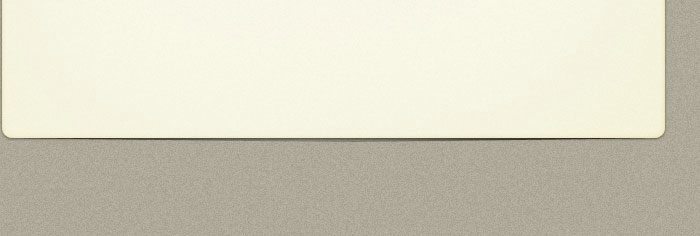
This room was the main room of the palace of Pope Nicholas IV. The door on the right at the end of the room leads out onto the loggia. This space was enclosed in the 16th century but re-opened in the recent restoration of the palace.
[48 - 54] Scenes from the Life of Christ
The Opera del Duomo commissioned these altarpieces over a considerable period to form a coherent narrative cycle for the altars in the nave of the Duomo, as described in the page on the remodelling of the Duomo. The associated frescoes were destroyed in ca. 1890, but the ten altarpieces survive in the museum.
Altarpieces by Girolamo Muziano:
The young Girolamo Muziano was the first major artist to be commissioned to contribute to a series of altarpieces depicting scenes from the life of Christ for the Duomo (as described in the page on the remodelling of the Duomo), on the recommendation (in 1555) of Raffaello da Montelupo and of citizens of Orvieto resident in Rome.


Raising of Lazarus Way to Calvary
The initial commission from Muziano was for two altarpieces:
-
✴[55]: the raising of Lazarus (1556) (following the brilliant reception that he had received for an altarpiece on the same subject in Rome - see above); and
-
✴[51]: the way to Calvary (1557), in which Santa Veronica holds the cloth with which she has wiped the face of Christ.
These altarpieces were installed (respectively) on the 4th altar on the left and on the altar opposite. Girolamo Muziano also completed the fresco and stucco decoration of one of the new chapels (probably the 4th on the left) before he left Orvieto in 1558.


Flagellation of Christ Capture of Christ
Muziano subsequently painted another two altarpieces, which were sent to Orvieto from Rome:
-
✴[49]: the flagellation of Christ (1575); and
-
✴[48]: the capture of Christ (1584).
Altarpieces by Cesare Nebbia:



Marriage at Cana Crucifixion Crowning of Christ with thorns
The persistence of the young Cesare Nebbia in working in the Duomo for only scant recompense culminated in a commission to execute the frescoes (1566) of the 1st chapel on the left. He was subsequently commissioned to paint its altarpiece (1567), which depicted Christ’s miraculous conversion of water into wine at the marriage at Cana [53]. These commissions marked the start of his career as an independent artist. He restored his altarpiece of the marriage at Cana in 1572, after it had been damaged in some way. This probably completed the decoration of all the chapels in the left aisle.
Cesare Nebbia executed the frescoes of all five chapels on the right in the period 1572-7, working alongside the Florentine master of stucco, Ferrando Fancelli. He also executed two of their altarpieces:
-
✴[52]: the Crucifixion (1573-4), in the 5th chapel,; and
-
✴[50]: the crowning of Christ with thorns (1575), in the 3rd chapel.
[54] Christ healing a Cripple (1565-6)

Nicolò Circignani was duly commissioned to execute the frescoes of the Cappella di San Nicolò, (the 3rd on the left). He subsequently also painted its altarpiece (1566), which depicted Christ healing a cripple at the baths.
Altarpieces by by Federico Zuccari
Giorgio Vasari records that, “having heard the fame of Taddeo [Zuccari] by means of friends, [the Opera del Duomo of Orvieto] sent a summons to him, and he went to Orvieto, taking with him [his younger brother] Federico [Zuccari]. There, ... he executed two great figures on the wall of one of [the new chapels in the nave], one representing the Active Life, and the other the Contemplative ...; and while Taddeo was painting those figures, Federigo painted three little stories of St Paul in the recess of the same chapel. At the end of which, both having fallen ill, they went away, promising to return in September”. Surviving documents record payments made to Taddeo Zuccari in 1559 for work in stucco and fresco in the 5th chapel on the left, together with the commission of an altarpiece for it. However, Tadeo never returned and the altarpiece was never painted.
In 1568, Federico Zuccari accepted a commission for two altarpieces for the new chapels of the Duomo.
-
✴He painted the altarpiece (1569) of Christ raising the son of the widow of Nain (for the 2nd chapel on the left). An early drawing for this altarpiece survives in the British Museum and an engraving by Jacob Matham survives in the Villa Mylius-Vigoni, Menaggio (near Como).
-
✴He renewed the frescoes the 5th chapel on the left (which, as noted above, he had worked on in 1559 as an assistant to his older brother Taddeo), and painted its altarpiece (1570) of Christ curing a blind man. Drawings for this altarpiece survive in the Blanton Museum of Art, Texas and in the Musée du Louvre, Paris, and a sketch for a part of it survives in the Morgan Library and Museum, New York.
The Opera del Duomo accepted the request of Federico Zuccari for extra payment for this work in 1572, by which time it was presumably complete.
[These panels were in restoration on my last visit (April 2012).]
[56] Birth of the Virgin (1582-4)

Cesare Nebbia was busy in Rome at this time, on work for Pope Sixtus V, and a number of surviving letters document successive delays with this commission. However, the altarpiece was extremely well received when it finally arrived in Orvieto in 1584.
[57] Coronation of the Virgin (1616)

[58] Fragment of the Coronation of the Virgin (1713-4)

The new mosaic, which was probably the first work by Mazzani in his native city, replaced a mosaic (1568) of the Resurrection of Christ. It began to deteriorate almost immediately, and was finally replaced in its turn in 1842-7.



